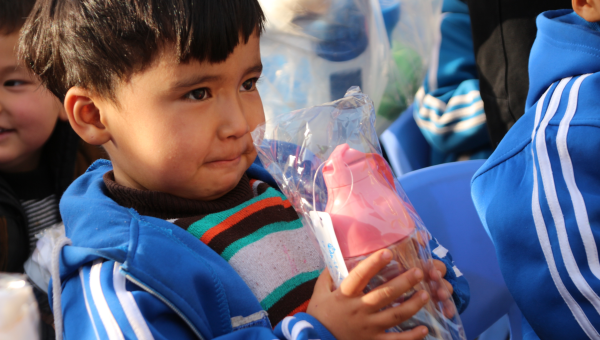The Secondary Copper Project
Summary
-
Building on UNDP’s expertise supporting unintentionally produced Persistent Organic Pollutants (UPOPs) Reduction through BAT/BEP in Secondary Copper Production Sector in China since 2016, the Secondary Copper project, as a flagship initiative, successfully facilitated the UPOPs reduction in secondary copper industry, Construction of intelligent management platform for secondary nonferrous metals industrial Park and had a tangible impact on national and local policy making. Demonstration cities that participated in this project include Jiangxi Nanchang city, Shangrao city, Fuzhou city, Yingtan city, Anhui Tongling city etc.
-
The secondary copper project, namely the “UPOPs Reduction through BAT/BEP and PPP-based Industry Chain Management in Secondary Copper Production Sector in China” project, was carried out in partnership with the Ministry of Ecology and Environment, Foreign Environmental Cooperation Centre (FECO/MEE), Jiangxi EPB, in close collaboration with China Non-Ferrous Metals Industry Association (CNIA), and with support from the Global Environment Facility (GEF)
Background
-
China's secondary copper production is becoming increasingly important owing to the increased demand for copper metal and decreasing copper mine resources in the world. Increased production, combined with low technology production and primary pre-treatment approaches, predominantly practiced in small and medium size enterprises, is drastically increasing the release of UPOPs in China. This not only affects the workers in this sector, but also surrounding communities, impacting the environment and human health.
-
The Project was designed to develop a national replication plan of BAT/BEP for the secondary copper smelting industry on the demonstration results and experience gained, with PPP joint governance and management structure put in place
-
The overall results of the project are the reduction and elimination of PCDD/Fs releases through the introduction of BAT/BEP in the secondary copper production sector in China. Consistent with this objective, the five-year project aims to reduce releases of UPOPs from secondary copper production in China, to reduce negative impacts on human health and the environment.
-
4 BAT/BEP demonstrations conducted in two secondary copper enterprises and 46.20 g TEQ annual dioxin reduction in two demonstration enterprises (43.475 g TEQ reduction in flue gas and 2.724 g TEQ reduction in residues )
-
One Province, three industrial parks and 18 incentive programme companies (eight Smelting companies and ten dismantling companies) were selected and are currently under the management of FECO
-
Driven by this project, “The technical specifications for the application and issuance of pollutant permits for secondary non-ferrous metal” and “The Evaluation index system of cleaner production in secondary copper industry” have been officially issued by National Development and Reform Commission (NDRC) and MEE respectively
-
114 training sessions were conducted on prevention and control measures for PCDD/Fs and BAT/BEP with participation of 1,810 governmental officials, 5,521 technical workers, 8,250 enterprise managers and 1,059,480 general public
-
The experience gained has already been integrated into the development of the Secondary Copper Industry in the Province under the Management of FECO and is being extended into the whole industry across China
-
Powered by these projects, China has become a major knowledge hub for exchanging POPs related technologies, policies and practices with other developed and developing countries.
Project outcomes
-
The national standards and BAT/BEP applications are in place and emissions of UPOPs (especially PCDD/Fs) were reduced
-
Demonstrate BAT/BEP and PPP-based industry chain management to address and achieve reduction of POPs emissions in the secondary copper production process
-
Facilitate necessary policy and regulatory Frameworks for the reduction UPOPs in Secondary Metals industry in China
-
Enhance information dissemination and awareness on reduction of POPs emissions in the secondary copper production process
-
The experience has already been learned and integrated into the development of secondary copper industry in the demonstration province and extended into the whole industry in China.
GESI Component
-
Although not specifically targeting women groups as key stakeholders or direct beneficiaries, the Secondary Metals project has integrated a gender-responsive and inclusive perspective into project management and implementation procedures
-
Project ensured women’s participation at all stages, both as staff of project management offices, recipients of various forms of technical assistance, and experts and consultants retained by the project
-
Project also increased the proportion of women in the secondary non-ferrous metals sector, creating many employment opportunities including in recycling copper enterprises, and as machine operators whose incumbents are predominantly women

 Locations
Locations
